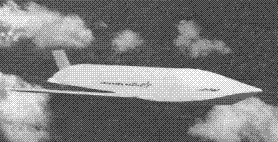

Ramon Lopez/WASHINGTON DC
Lockheed Martin can expect to earn more than $2 billion from the Joint Air-to-Surface Stand off Missile (JASSM) programme after winning the first battle against Boeing to provide an initial 2,400 of the cruise missiles to the US Air Force.
The US Department of Defense awarded the competition to Lockheed Martin on 9 April, providing a $36 million contract to complete the definition and risk reduction phase of the programme and to prepare for engineering and manufacturing development and eventual missile production.
The US Navy could further swell Lockheed Martin's orderbook, but the force's position on the JASSM remains unclear. The USN's waning support during 1997 sparked an independent "analysis of alternatives" which determined that the stealthy JASSM offers "a dramatic increase in effectiveness" over conventional weapons, including the improved Boeing SLAM, a derivative of the Harpoon anti-ship missile.
Capt Grant Begley, the Navy's deputy JASSM programme director, says that the USN remains part of the JASSM project, but considers the SLAM-ER the near term solution. "The USN will continue evaluating JASSM with the potential to procure it in the out-years, but there has been no decision to procure the missile," he says.
USAF officials say: "Lockheed Martin had a superior JASSM proposal in just about every aspect, including cost." They add that the company's bid is "well below" the USAF's $400,000 per missile target.
Richard Caime, Lockheed Martin JASSM programme vice-president, says: "This is our entry into the cruise missile business." Boeing calls the loss "disappointing", but says that it is not contemplating a formal protest. Darleen Druyan, the USAF's source selection authority for the competition, hopes there will be no protest.
Caime says that he drew upon Lockheed Martin's low cost missile manufacturing and low-observable technology experience to win the contest, and worked with the subcontractors to curb additional costs. Caime also says that his missile design allows for much simpler mission planning.
The JASSM production begins with 95 missiles, and 100 missiles in the first two lots. Peak production calls for 360 missiles in each of the following seven years.
Source: Flight International




















